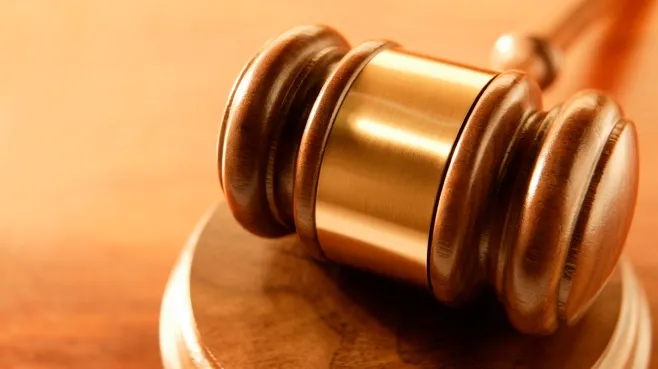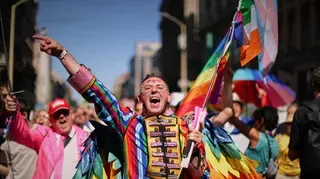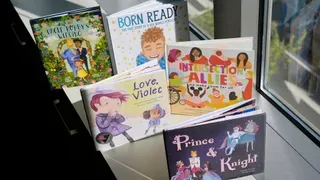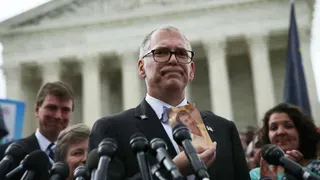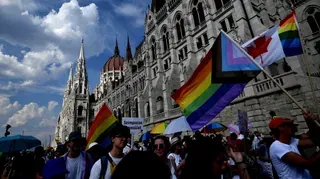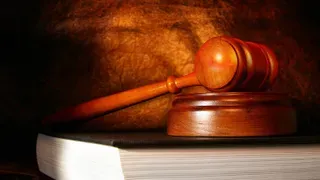October 7, 2020
New York to Impose New Shutdowns in Coronavirus Hotspots
Marina Villeneuve, Jennifer Peltz READ TIME: 4 MIN.
New York state will reinstate restrictions on businesses, houses of worship and schools in and near areas where coronavirus cases are spiking, Gov. Andrew Cuomo said Tuesday, saying the severity of shutdowns would vary by proximity to the hot spots.
Set to take effect no later than Friday, the new rules will affect parts of Brooklyn and Queens in New York City, sections of Orange and Rockland counties in the Hudson Valley, and an area within Binghamton in the Southern Tier.
The planned restrictions include school and business shutdowns in some areas; others will see limitations on gatherings and restaurant diners.
But an Orthodox Jewish organization called the action "appalling to all people of religion and good faith" and threatened to explore all options to undo it.
The plan marks a sizeable step back after a cautious reopening this spring and summer in New York, an early U.S. hot spot of the pandemic and the deadliest. While the daily toll dropped dramatically after a surge in March and early April, more than 33,000 New Yorkers in all have died of COVID-19, more than in any other state, according to figures collected by Johns Hopkins University.
"This is about protecting people and saving lives," Cuomo, a Democrat, said at a news conference in Albany.
In the hearts of the hot spots – color-coded as red zones – schools will close to in-person learning, only essential businesses could remain open, houses of worship could convene no more than 10 people at once, and restaurants could offer only takeout.
Those areas are surrounded by "orange" or yellow" zones, according to maps the state released later Friday.
In orange zones, schools also will be remote-only, and nonessential enterprises considered high risk – such as gyms and personal-care businesses – will be closed. Religious institutions are to be restricted to 25 people, and restaurants can offer limited outdoor dining, with a maximum of four guests per table.
In yellow zones, businesses and schools can stay open, with mandatory weekly testing of a yet-to-be-determined percentage of students and teachers. Religious institutions can operate at half capacity, and restaurants may seat parties up to four indoors and out.
Rockland County Executive Ed Day, a Republican, said he backed the governor's plan and would do what he could to help implement it, calling the restrictions "measured and clearly focused."
He urged residents to embrace their "civic duty to do what is right, not only for ourselves but for our entire community."
In Broome County, where part of Binghamton's west side will be subject to "yellow" zone rules, County Executive Jason Garnar said the restrictions could benefit an area that went from about 60 active cases 10 days ago to 458 on Tuesday.
"A lot of what we've seen is spread through the restaurants and the bars," said Garnar, a Democrat. He added: "Just as quick as we got into this, we can get out of this."
New York City's implementation is likely to begin Thursday, according to a tweet from Bill Neidhardt, a spokesman for Mayor Bill de Blasio.
A message seeking comment was left with officials in Orange County.
After a harrowing spring, New York boasted a steady and relatively low transmission rate over the summer. But clusters have sprouted recently, with rising infections.
In New York City, about 11,600 people have tested positive since Sept. 1, compared with less than 7,400 in August. In early April, 5,000 to 6,000 people or more tested positive each day.
The city has been averaging around four deaths from COVID-19 per day since Sept. 1, compared with nearly 550 daily in April.
The new restrictions came a day after Cuomo ordered the closing of schools in nine Brooklyn and Queens ZIP codes that have accounted for more than 25% of all new infections in the city over the past two weeks while representing just 7% of the population.
De Blasio had also proposed closing nonessential businesses in those areas, but Cuomo suggested that the boundaries needed to be drawn more broadly.
"We are at a crucial moment in our fight against the coronavirus," the Democratic mayor said at a virtual news briefing before Cuomo's announcement. "We have to bring everything we can to bear. We have to be tough about it."
The affected areas in the city are largely Orthodox Jewish strongholds, and some community members have complained of being singled out for enforcement.
Agudath Israel of America, an Orthodox Jewish umbrella organization, criticized what it said was a "surprise" measure and the 10-person limit in red zones, saying religious practices were being targeted.
In response to Cuomo saying earlier that he had productive conversations with community leaders, David Zwiebel, executive vice president of Agudath, said in the statement it "was largely a one-way monologue, and contained no mention of this new plan."
North of the city, Orange County Health Commissioner Dr. Irina Gelman ordered school closures for at least two weeks in Kiryas Joel, an Orthodox Jewish community where schools are already closed this week because of the Jewish holiday of Sukkot.
An average of nearly 28% of coronavirus tests have come back positive over the last three days in the village, also known as the Town of Palm Tree. Statewide, the daily average has been around 1% in recent days.
